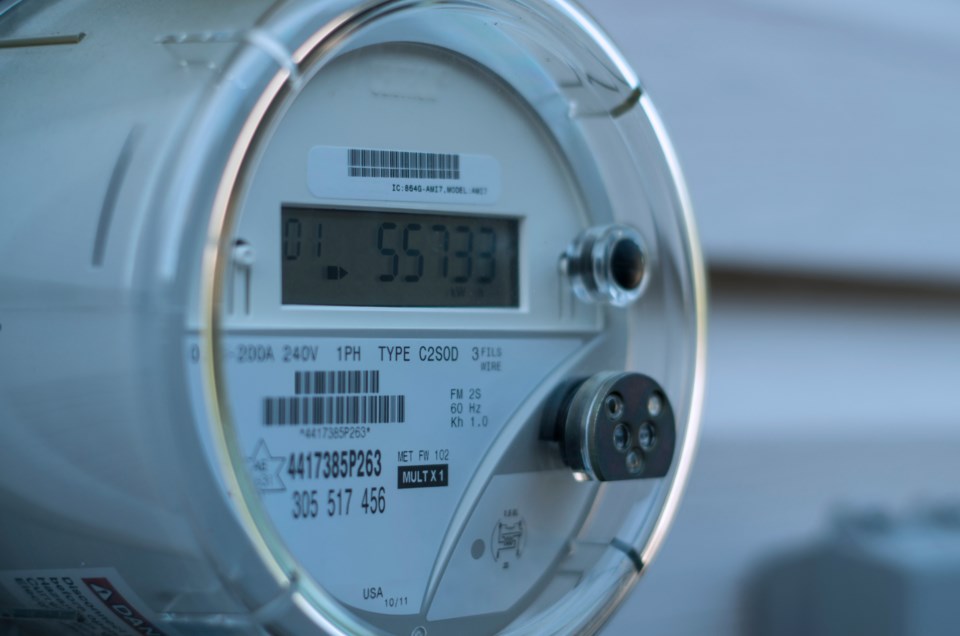A group of Longmont residents plans to speak out against the city’s Advanced Metering Infrastructure (colloquially referred to as “smart meters”) policy at Tuesday’s Longmont City Council meeting. The residents, including Zoiy Galloay, Doe Kelly, and Kimberly Edmundson, have expressed health concerns about the smart meters and believe the rule should be amended to allow residents to opt out of using them without financial penalties. The group is led in part by Galloay, who said she started experiencing headaches days after her smart meter was installed in August.
Galloay told the Longmont Leader she started to experience symptoms of electromagnetic hypersensitivity syndrome (EHS) in the week after her smart meter was installed last fall. “Over the weekend and the next week, I started developing more symptoms like having heart palpitations, extreme vertigo, severe brain fog, complete inability to concentrate, chest pains, my skin burning, anxiety, depression, acne, burning sensations on my skin, throbbing in my ears, pressure in my head, metallic taste in my mouth, declining eyesight, bloodshot eyes and swelling around my eyes,” she said. “I had short term memory loss and would stand in my house, not remembering what I was doing.”
The World Health Organization states that while the symptoms associated with EHS are real and can significantly impact individuals’ well-being, studies have not found a consistent, scientifically verified link between electromagnetic field (EMF) exposure and the reported health effects. The WHO further explains that EHS is not recognized as a medical diagnosis and does not have clear diagnostic criteria. Multiple studies suggest that EHS symptoms may be influenced by other environmental or psychological factors rather than direct exposure to electromagnetic fields
Galloay said she has known for 10 years she had a sensitivity to wireless routers because she would develop “burning sensations and headaches” when near them. Everything in Galloay’s home is wired and she used "electromagnetic field-blocking paint” to minimize or eliminate exposure from her neighbors’ wireless routers. After her smart meter was installed and Galloay experienced negative health symptoms, the symptoms dissipated when she went to work and returned when she came home. She paid the fee for an opt-out meter, but said that she continued to experience symptoms because the opt-out meters still emit radiofrequency radiation.
Galloay said she has left her home and has been sleeping in spare bedrooms and sometimes her car for the last eight months. However, the city maintains that smart meters meet all federal safety regulations, with the Federal Communications Commission (FCC) concluding that they do not pose a health risk.
The Advanced Metering Infrastructure (AMI) was implemented by the city in 2023 with a list of intended benefits. The city reported on its website that “advanced meters read themselves multiple times per day,” while traditional meters are only read once per month. The city’s overview said this information will paint a “clearer picture of energy usage and more opportunities for energy efficiency.” The city said that the rollout of advanced meters will enable the city to meet its goal of using 100 percent renewable energy by 2030. Longmont completed the meter replacements in the city in December 2024.
The city explained on its AMI webpage that the FCC and the National Institute for Occupational Safety say that smart meters are safe for use in homes. “According to the FCC, RF levels are greater in cell phones (almost 13,000 times greater), microwave ovens (about 300 times greater) and home Wi-Fi routers (almost 70 times greater) than from an AMI meter,” the city said.
Longmont Sustainability Advisory Board member Ethan Augreen, who supports the policy reforms sought by Galloay and other concerned residents, told the Longmont Leader that the comparison to cell phone exposure is like comparing apples to oranges. “Specifically, it compares peak localized exposure from a cell phone at the ear to average whole-body exposure from a smart meter, which radiates intermittently but continuously throughout the home environment,” Augreen said.
The U.S. Court of Appeals for the D.C. Circuit ruled in 2021 (Environmental Health Trust et al. v FCC) that the FCC must justify its standards with a reasoned explanation, assess the long-term effects of RF radiation exposure — particularly on children — and evaluate environmental impacts through review of scientific studies, expert testimony, and public concerns.
The opt-out fee for Longmont residents to not use smart meters is $50 up-front if completed before the installation of the smart meter and $125 if completed after installation. Residents who opt-out are also required to pay $15 per month to the city. Augreen said the monthly fee was increased immediately after the rollout and has increased overtime in other jurisdictions, which is one reason why the group of residents wants the city to eliminate the fees. The city said that the fees include a “one-time cost to install a manually-read meter and a small monthly charge to help defray meter reading administration costs.”
The city’s overview page links to a fact sheet by the Smart Energy Consumer Collaborative (SECC) that states that “no credible evidence shows any threat to human health from RF emissions at or below RF exposure limits developed by the FCC. With over 25,000 articles published on the topic over the last 30 years, scientific knowledge in this area is now more extensive than for most chemicals.”
The Longmont City Council’s upcoming meeting is on April 1 at 7 p.m. in the Council Chambers located in the Civic Center. The meeting can also be livestreamed on a variety of platforms.



